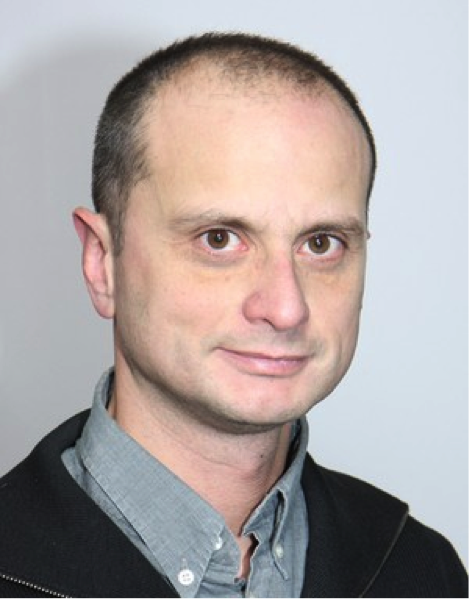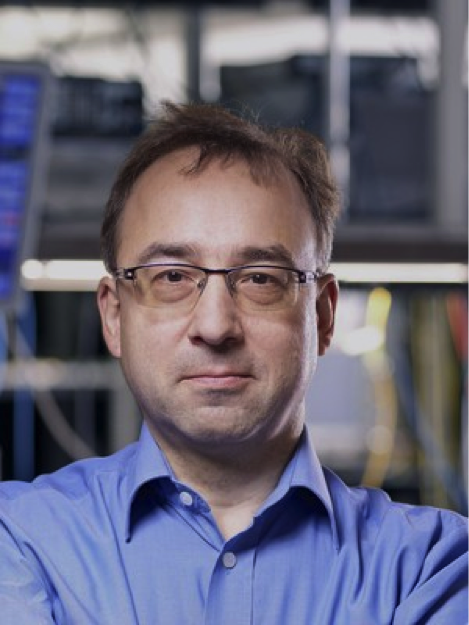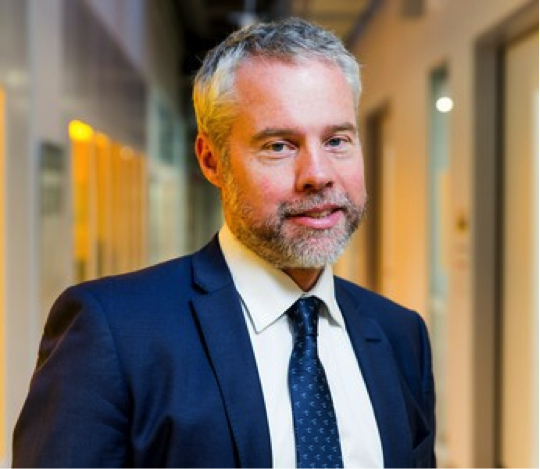Invited speakers > Plenary Talks
 |
Andrew Weiner, Purdue University, USA, Ultrabroadband Radio-Frequency Photonics
One of the outstanding attributes that optics brings to radio-frequency photonics is the ability to coherently manipulate very wide bandwidth. Ultrabroadband RF photonics approaches enable programmable arbitrary waveform generation at frequencies up to the RF W-band, reconfigurable filtering at deep submicrosecond rates, and hardware spread spectrum pulse compression over multi-GHz bandwidths. Conversely, RF controlled processes such as phase modulation enable exotic optical configurations such as temporal cloaks. This talk surveys the field of ultrabroadband radio-frequency photonics, drawing heavily on research at Purdue University, and illustrating the application both of established devices such as mode-locked lasers and pulse shapers and newer components such as microresonator frequency combs.
|
 |
Yann Le Coq, Syrte, France, Ultra low phase noise microwave generation with stabilized optical combs
Microwave signals generated by photonics means have demonstrated their high potential compared to purely electronics technologies. Among such techniques, a femtosecond laser in the optical frequency comb configuration has the potential to generate extremely low phase noise microwave signals by photodetection of the pulse train. This technology has now demonstrated the generation of microwave signal with phase noise as low as -173dBc/Hz at >10kHz and -100dBc/Hz at 1Hz from a 12GHz carrier. To achieve this low phase noise, the optical frequency comb is phase locked to a high performance Fabry-perot-stabilized CW laser. The microwave signal is therefore phase coherent with the optical radiation of CW laser and the optical comb effectively acts as a frequency divider from the optical to the microwave range. The corresponding large division ratio, combined with the high spectral purity achievable for CW laser, explains the extremely low phase noise that is achieved. This communication will present the technique in more detail and, in particular, address the various parasitic effects that can limit the performance, as well as the ways to circumvent them. In particular, we describe the use of pulse inter-leavers to increase signal to noise ratio and the control of the effect of amplitude noise and pulse breathing noise that in general convert into excess phase noise in the photodetector. A noise metrology technique is also developed, based on a home-made fully digital heterodyne cross-correlator. Last, on-going work aiming at reducing the footprint of the apparatus for in-field applications, at the cost of a slightly reduced performance, is presented.
|
 |
Juerg Leuthold, ETHZ, Switzerland, Plasmonic for microwave photonics
Plasmonics is emerging as a solution that may complement photonics for applications where highest speed and a most compact footprint is needed. So for instance, plasmonic phase-shifters, modulators and novel plasmonic photodetectors offering bandwidths exceeding 300 GHz have been introduced. These components have already been tested for use in highest-speed optical communications. Yet, such components may also play an important role in the development of next generation sub-THz millimeter links or become pivotal in ultrafast beam-steering schemes. In this talk, we will review the advantages and challenges offered by microwave plasmonics. We will review the state-of-the art of current components and comment future trends in the field.
|
 |
Benjamin Eggleton, University of Sydney, Australia, Advanced Brillouin signal processing using integrated approaches
Stimulated Brillouin scattering (SBS) is a phase matched nonlinear process between photons and optically driven acoustic phonons. In this paper I provide a detailed overview of Brillouin scattering in integrated waveguides in the context of recent results from the literature, highlighting the emergence of applications in microwave photonics and signal processing and will provide perspectives for future platforms and opportunities for further research and translation.
|
|

